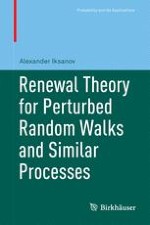
2016 | OriginalPaper | Buchkapitel
1. Perturbed Random Walks
verfasst von : Alexander Iksanov
Erschienen in: Renewal Theory for Perturbed Random Walks and Similar Processes
Aktivieren Sie unsere intelligente Suche, um passende Fachinhalte oder Patente zu finden.
Wählen Sie Textabschnitte aus um mit Künstlicher Intelligenz passenden Patente zu finden. powered by
Markieren Sie Textabschnitte, um KI-gestützt weitere passende Inhalte zu finden. powered by